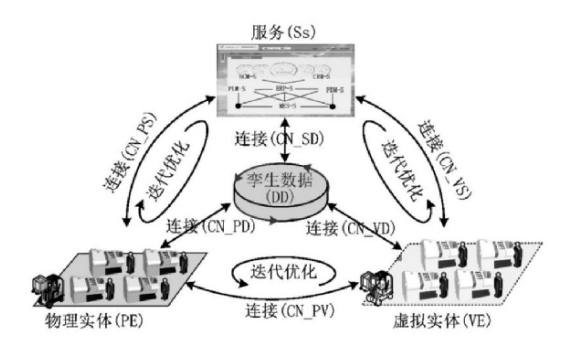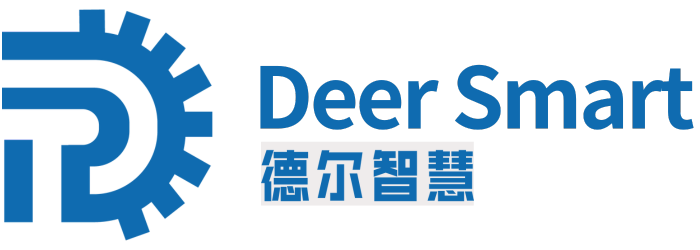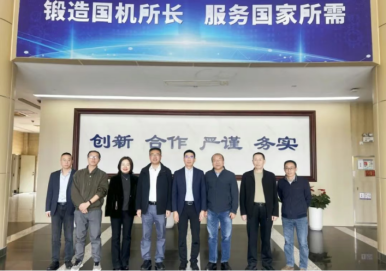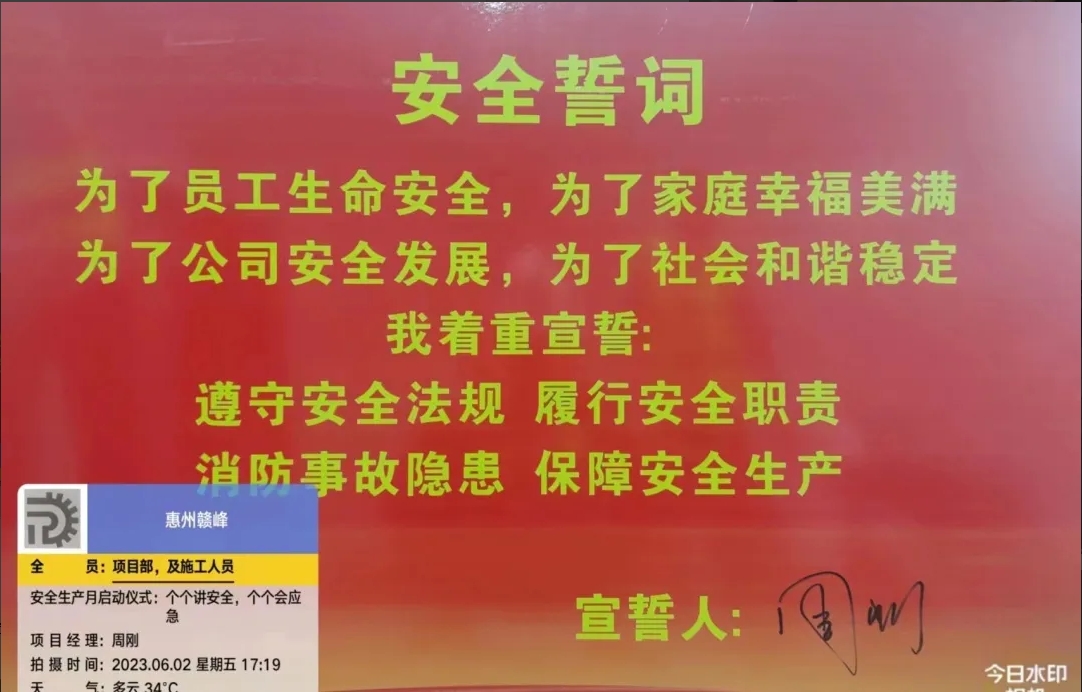
NEWS
New industrial Internet technology
chapters and sections
Chapter 1: Industrial Network 3.0
Chapter 2: Cloud Native & Edge Native
Chapter 3: Industrial yuan-dimensional universe
Chapter 4: Industrial Intelligence
Chapter 5:5G + Industrial Internet
Chapter 6: Standardization, talent, vision
give guidance to reading
[deer smart | Lecture] · New Technologies in Industrial Internet (to be shared in six chapters), the speaker is Dr. Zengwei Lu, a postdoctoral fellow from Hefei University of Technology, who will provide a comprehensive overview of new technologies in industrial internet. (Acknowledgment: Due to references to sources that are reprinted or adapted, the copyright belongs to the original authors; we extend our gratitude to them!)
This article is the first chapter of —— Industrial Network 3.0
Chapter 1: Industrial Network 3.0
- -Evolution, technology, connotation, and drive
01
The Evolution of the Industrial Revolution
Human beings have roughly experienced four stages of industrial revolution, and the evolution of industrial network corresponds to the last three industrial revolutions.
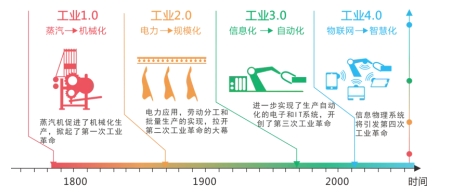
02. Evolution of industrial networks
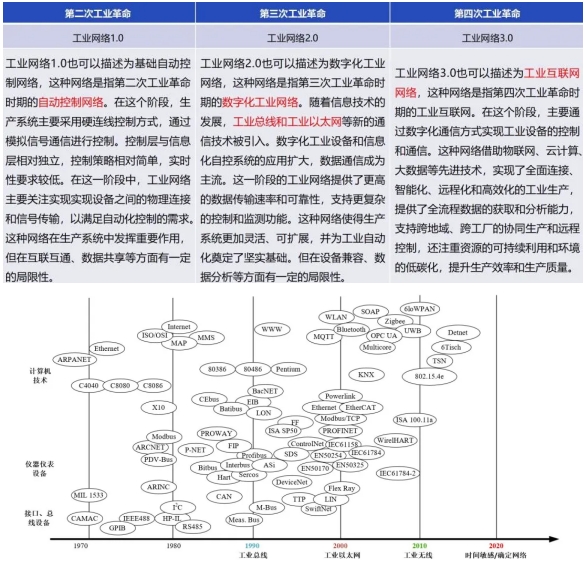
03 The connotation of industrial network 3.0
Based on network technology, it aims at ubiquitous interconnection, deterministic carrying, intelligent simplicity and high efficiency and low carbon, and fully supports the interconnection and interoperability of machines and platforms, people and platforms, and people and machines.
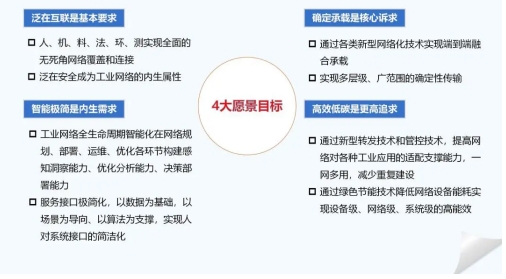
04 Development driving force of industrial network evolution
Business and technology are the main drivers of industrial network evolution
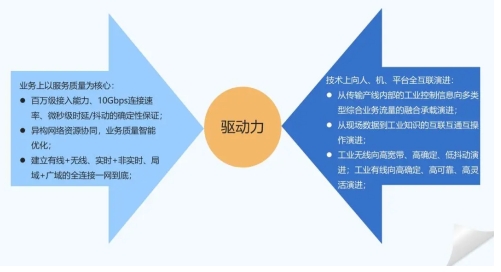
05 Industrial Network 3.0
Comprehensive coverage of human, machine, platform interaction
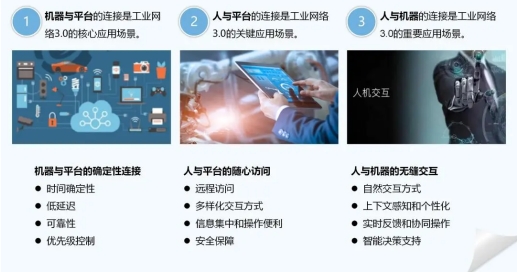
06 The connection of the machine to the platform is
The core application scenario of industrial network 3.0
Industrial Network 3.0 can also be described as an industrial Internet network, which refers to the industrial Internet during the fourth Industrial Revolution. At this stage, the control and communication of industrial equipment are mainly realized through the digital communication mode. The network with the help of the Internet of things, cloud computing, big data and other advanced technology, realize the comprehensive connection, intelligent, remote and high efficiency of industrial production, provides the whole process of data acquisition and analysis ability, support across regions, across factory collaborative production and remote control, also pay attention to the sustainable use of resources and environment of low carbon, improve production efficiency and production quality.
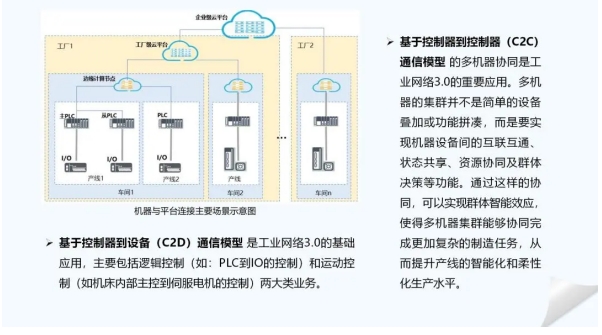
07 The human connection to the platform is
Key application scenarios of industrial Network 3.0
Data is the basic element of the construction of intelligent factory, platform is the main carrier of data storage and processing, and the brain of intelligent factory. The platform provides functions such as information presentation, configuration and distribution, operation and control for users' specific interaction requests. People always have the highest management and control authority. Therefore, the platform should establish a system of human teaching-machine training system, and provide interactive interface for intelligent decision-making upgrade while gradually replacing the tedious and repetitive operation of human beings.
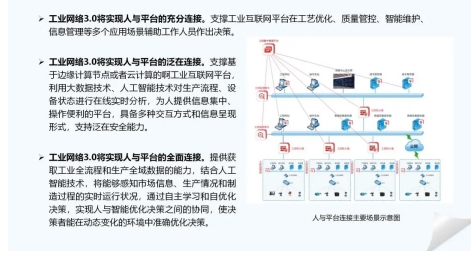
08 The human connection to the machine is
An important application scenario of industrial network 3.0
Industrial Network 3.0 will provide a variety of ways to interact between people and machines, including mouse, keyboard, touch screen, virtual reality (VR), augmented reality (AR), voice, and hands
◆ Industrial environment monitoring and product quality testing scenarios based on HD machine vision can greatly improve production safety, production efficiency and product quality.
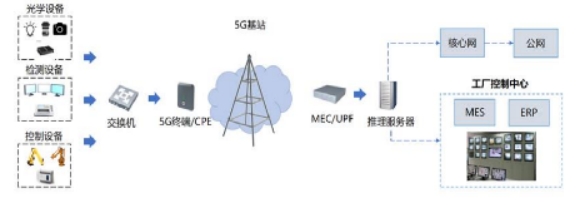
◆ Remote operation monitoring and operation of equipment based on VR / AR is gradually becoming a new application of industrial Internet.
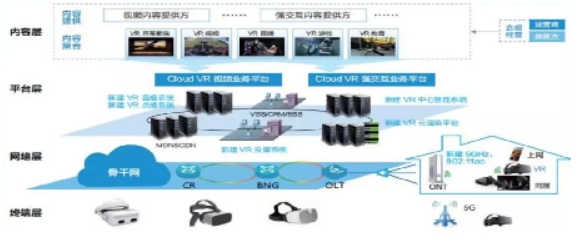
◆ Industrial remote control based on digital haptic technology is considered to become the development direction of industrial robots.
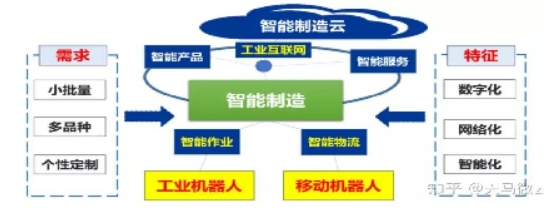
09 Full connection of people, machine and platform brings 4 major challenges
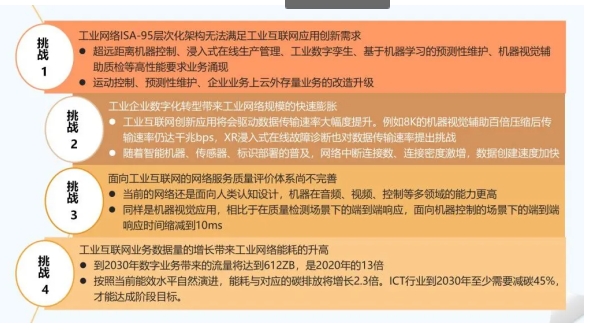
10 Functional architecture
Industrial Network 3.0 needs to further realize real-time reliable multi-mode interconnection, deep intelligent network planning and network endogenous industrial control on the basis of deterministic forwarding of traditional industrial network through functional architecture support.
● The application layer is responsible for identifying the requirements raised by the upper layer business and converting them into various service indicators within the industrial network.
● The choreography layer moDeers the business according to the requirements of the application layer, and intelligently arranges the network tasks based on the traffic moDeer.
● The control layer senses the current network state and manages the network resources across the domains, and manages and allocates the network devices according to the network arrangement results, so as to provide resource guarantee for the upper-level services.
● The network layer provides the ability to forward the basic hardware for industrial networks.
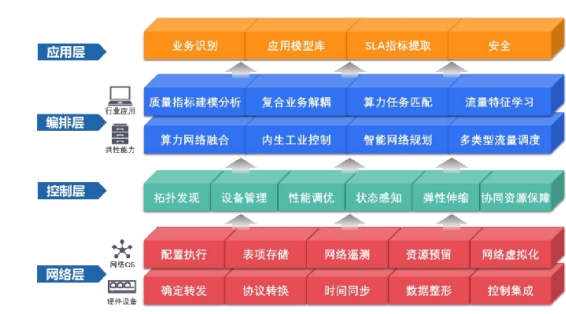
▲ Industrial network 3.0 functional architecture diagram
11 Service architecture
Industrial network design and application industry standards are mixed and highly specialized, making it difficult to find a universal development moDeer. It is necessary to summarize and refine industry knowledge to form dedicated industrial SAAS, industrial PaaS and industrial IaaS cloud service moDeers.
● Industrial SaaS provides a variety of special industrial software software in the form of network rental, including machine vision applications, motion control applications, ubiquitous IOT applications, AR / VR applications, accurate positioning applications, etc.
● Industrial PaaS for industrial users and industrial application developers, providing the platform environment and interface for software operation, including business development, service orchestration, data processing, moDeering analysis, deployment management, etc.
● Industrial IaaS provides basic resource support for developers of the entire enterprise or application, including servers, memory, containers, virtualization, operating systems, etc.
● Industrial NaaS realizes the flexibility, scalability and customability of the network by Deerivering network functions and resources to users in the form of services.
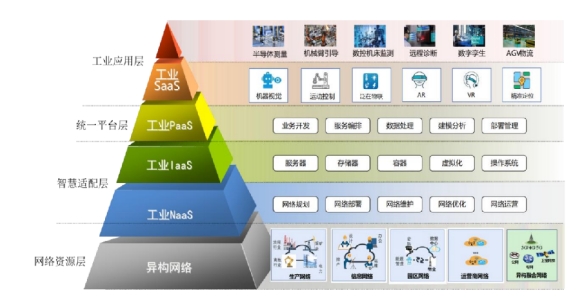
Schematic diagram of industrial network 3.0 service architecture
12 Deployment architecture
Industry 3.0 network should have the ability of network stratification, centralized control, unified interface and flexible intelligence. At the deployment level, the industrial 3.0 network is divided into edge layer, bearing layer and interconnection layer.
● The edge layer is the main area where human, machine and platform interact closely. The existing field network and factory wired wireless Intranet are integrated into a unified, high-bandwidth, flexible networking network with deterministic IT / OT common network carrying capacity.
● The bearer layer network is used to realize the internal interconnection between the plant edge platforms, enterprise cloud platforms / data centers, etc., providing high bandwidth, high speed and software-defined network capabilities.
● The interconnection layer network usually undertakes the business bearing of the interconnection and data interconnection between enterprises and industrial resources. Enterprises can establish a business network integrating cloud network by deploying NFV network controllers to support enterprises to carry out resource allocation optimization and innovative ecological construction.
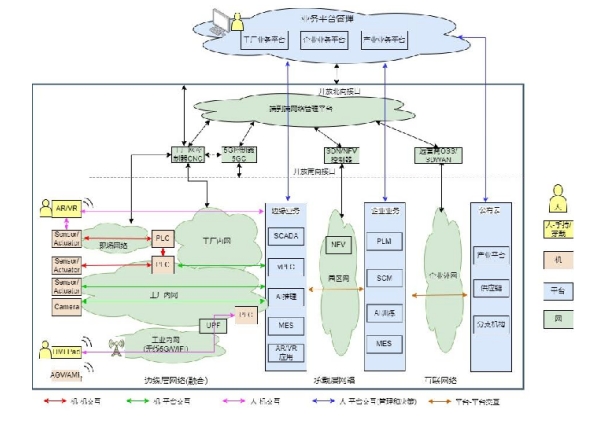
Deploy architecture diagrams
13 Key technologies
Three types of technologies form the industrial network 3.0 graph
● Forward technology aims at deterministic bearing, relying on the evolution of 5G, TSN, deterministic PON (Passive Optical Network), single-pair double-pair SPE, passive Internet of Things, cross-domain deterministic network, highly reliable forwarding technology, enhanced deterministic network and other technologies to build endogenous deterministic carrying network technology.
● In the field of management and control technology, with open autonomy, the evolution of network calculus, flexible arrangement, digital twin network and other technologies develops intelligent native network operation and maintenance technology.
● In the field of fusion technology, which aims to improve the industrial application service experience, the converged communication information technologies, such as computing network fusion, communication perception fusion, multi-source information fusion, wired and wireless converged networking, promote the continuous improvement of network service capability and experience.
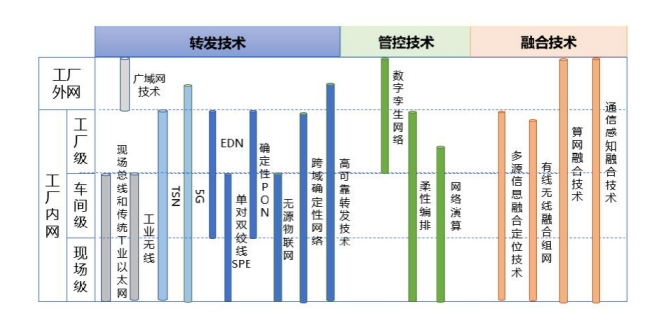
Industrial Network 3.0 Key technology map
14 Forward technology
Deterministic PON technique
01
A technology for optical fiber communication network uses new technologies such as single frame multi-burst, uplink registration window optimization, and collaborative DBA (Dynamic Bandwidth Allocation) to optimize the uplink Deeray and jitter performance of existing PON systems.
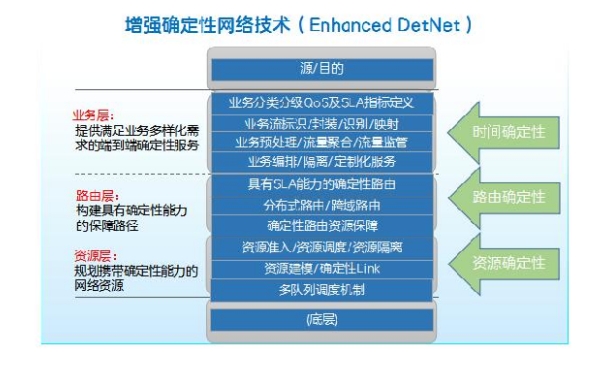
Enhance the deterministic network technology
02
Solve the challenges such as multi-flow concurrency control, end-to-end deterministic Deeray jitter guarantee of large-scale network, and coexistence of diversified deterministic forwarding technologies. Enhance the Detnet architecture from three dimensions: resource layer, routing layer and business layer.
15 Control technology
Network calculus technology
01
In industrial networks, the time-sensitive network (TSN) or quality service (QoS) scheduling service capability of network equipment can be expressed using the service curve formula. The service curve describes the service ability of network equipment to traffic traffic under different load situations, including indicators such as Deeray, bandwidth and jitter.
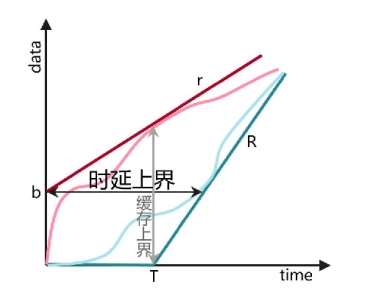
Digital twin network technology
02
The primary task of digital twinning is to create a digital twin mo Deerof the applied object. By introducing AI into network devices, real-time processing and analysis of device operation data, dynamic compensation and optimization of parameters, thus improving the algorithm accuracy of network devices.
